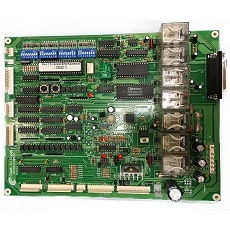
Some people may think that designing electrical hardware is just for the experts, but that does not have to be the case. If you want a bespoke electrical design for your business or to manufacture a product for sale, it could be a lot simpler to achieve than you think. You could, for instance, learn the basics online, and move forward from there. No matter what your level of knowledge of electrical hardware is, there are ways to bring your unique design to fruition.
The Steps for Successful Hardware Design
Most people’s minds would go somewhere else if asked the question, ‘what is hardware design?’ They would likely relate it to the hardware used in the computer world or to hardware shops that sell brooms, nails, and various other such items. The term, ‘hardware,’ can relate to many industries, including the world of electronics.
If you want to design a successful piece of electrical hardware, there are a few steps it is advisable to follow:
- Come up with the idea for the product
- Create diagrams of the electronic schematic
- Simulate the design
- Lay out the PCBs
- Select the materials you will use
- Order prototypes
- Inspect the prototypes
- Correct anything you want to change
- Share your design with the right people
- Raise the finances needed
- Outsource the manufacturing if you are not going to produce it yourself
Do You Need to Start from Scratch With your Design?
Before you start from scratch with a totally new design, it is worth checking out current community designs to see if there is one that can be adapted to suit your requirements. This could save time and money in the long run, and there are thousands for you to choose from.
Technology is Helping with Electrical Hardware Design
Your business can now use technology to help with electrical design hardware. You can automate some of the routine design tasks, such as signal analysis, component selection, and drawing. There will be fewer design errors, and automation will produce all the required documentation, such as schematics and bills of materials.
Technology can make it simpler for engineers to collaborate with each other, which results in designs being completed sooner and more efficiently. It allows changes to be made in real-time, without employees having to return to their workstations to make the necessary alterations. At the present time, it seems to be new startups that are embracing the new innovations, but existing companies need to do the same to compete. Those that fail to embrace technological progress in the relevant areas risk being left behind by their competitors.
Whether your business is small or large, there is no doubt that automating some of your electrical design projects will help to make you more profitable. It can be simple to learn and streamline every part of the process, from your initial idea and prototypes, right through to inspection, debugging, and mass production.
Related posts:
5 Tips to Securing the Right Domain Name for Your Brand
Why Cybersecurity is the Industry of Entrepreneurs’ Dreams
Do not Make these 7 Mistakes in Business Negotiations
Is your Business Taking Advantage of Technological Advances
Smartphone conversions will catch up with desktops – but only if you let them






